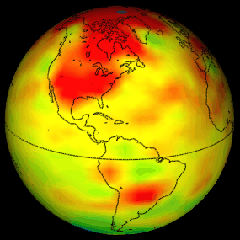
That’s the title of an op-ed from yesterday’s LA Times, and you try to come up with a better one…;-) While the title’s an eye-catcher, psychologist Daniel Gilbert focuses on a phenomenon that’s stumped us in the treehugging community for years: why don’t people respond to threats like global warming with the same intensity as, say, the potential of a terrorist attack? Gilbert describes four qualities the human brain looks for to identify danger that have served us very well for millennia, but leave us ill-equipped to deal with threats that don’t fit nicely into these contexts. According to Gilbert, we’re more likely to respond to a threat if it
- has a human face,
- offends our sense of morality,
- presents an immediate threat, and
- is characterized by sudden changes.
Gilbert gives brief but thorough overviews of each of these qualities, and the purposes they’ve served for us over human history, and even notes that we have developed an ability to think about dangers that aren’t immediately present, but it isn’t as finely honed as these others. That leaves us in a bit of a conundrum:
Environmentalists despair that global warming is happening so fast. In fact, it isn’t happening fast enough. If President Bush could jump in a time machine and experience a single day in 2056, he’d return to the present shocked and awed, prepared to do anything it took to solve the problem..
The human brain is a remarkable device that was designed to rise to special occasions. We are the progeny of people who hunted and gathered, whose lives were brief and whose greatest threat was a man with a stick. When terrorists attack, we respond with crushing force and firm resolve, just as our ancestors would have. Global warming is a deadly threat precisely because it fails to trip the brain’s alarm, leaving us soundly asleep in a burning bed.
It remains to be seen whether we can learn to rise to new occasions.
After reading this essay, I started to think of how we can shift our presentation of global warming to better fit these kinds of contexts we associate with danger. An Inconvenient Truth, for instance, focuses again and again on the moral imperative of addressing global warming, and, according to Gilbert’s criteria, that’s a very good thing. What else can we do? Would focusing more on the individuals at the top of the most polluting industries, and their lackeys in Washington, help us make the connection? I’m a bit stumped on the third and fourth characteristics — it seems we can only address those by pushing a scenario like that in The Day After Tomorrow, and that has little scientific credibility. Ultimately, we’ve got to go back to the kind of thinking Seth Godin mentioned back in March: how do we better market global warming, and how do we do it in a way that taps into these well-developed trigger mechanisms in our make-up. I’m thinking that hoping for sudden, massive evolution of our perception of danger isn’t particularly realistic…
Categories: globalwarming, danger, threat, humanbeing, evolution, psychology

